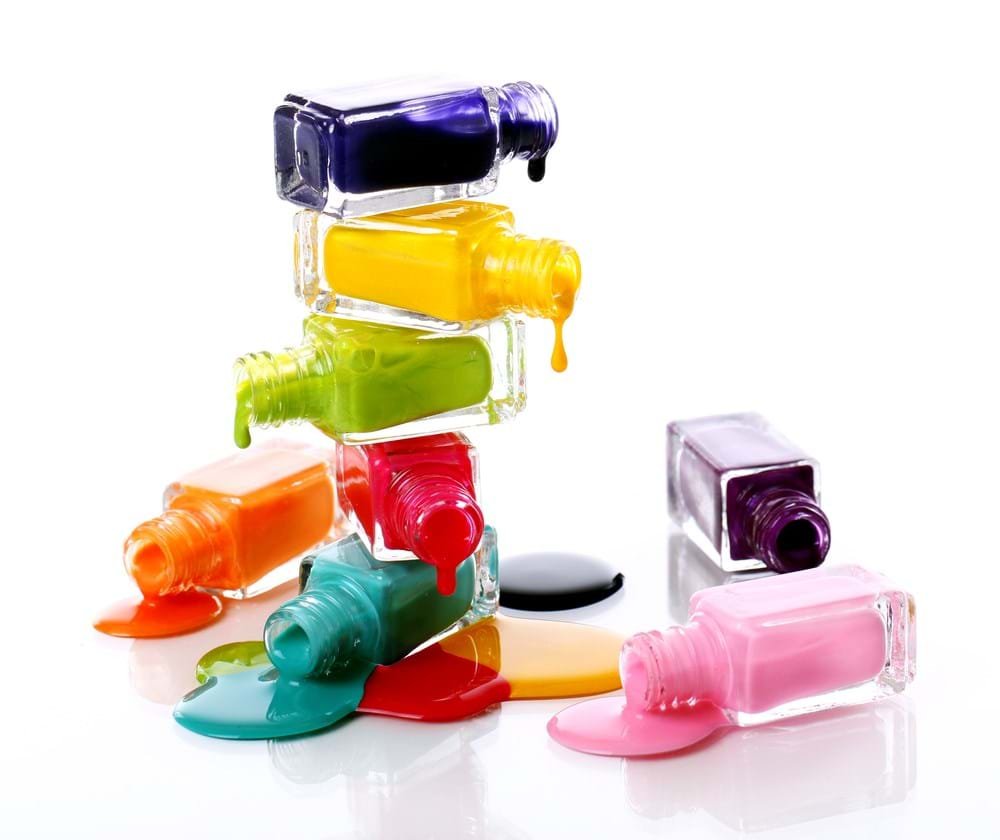Behind every good manicure is a great chemical engineer (Day 320)

12th April 2015
So why are more people visiting nail bars now, than when times weren't so tight and we had more cash in our pockets?
One explanation is the ‘lipstick effect’. When our budgets are squeezed, rather than losing the taste to splurge we simply trade large extravagancies for cheaper luxuries to cheer ourselves up. Cue the nail bar, manicures and chemical engineering.
The ‘lipstick effect’ can be traced back to the 1930s and the Great Depression. Industrial production halved in the US during 1929-1933, but cosmetics boomed.
The history of nail varnish dates back as far as 3000 BC, China, and when it was made from a mixture of beeswax, egg whites, gelatine, vegetable dyes and arabic gum.
The science behind it has come a long way since then, with companies employing chemists and chemical engineers to research the best combinations of materials to enhance its effects.

Nitrocellulose, a film-forming polymer, is the main ingredient in most nail varnish. The nitrocellulose creates a film that holds together the other components of the varnish.
There are tiny cotton fibres in nitrocelluose, which are ground during manufacturing so you don't notice them.
Quick fact for you – nitrocellulose is also the main ingredient in cine film, and many early 20th century nail varnishes used scrap cine film as the raw material.
Nitrocellulose is key to creating a good nail polish but other chemicals are needed as on its own it is brittle and doesn’t stick to nails very well.
Resins and plasticisers are added so the varnish is flexible and resistant to soap and water. Colour pigments are also added to the varnish.
The pigments are mixed with nitrocellulose and plasticiser using a "two-roll" differential speed mill. This grinds the pigment between a pair of rollers, with the aim to produce a fine dispersion of the colour. This is a variation of the Banbury Mixer (used also in the production of rubber for rubber bands).
When properly and fully milled, the mixture is removed in sheet form and broken up into small chips for mixing with the solvent. This mixing is performed in stainless steel kettles that can hold anywhere from 5-2,000 gallons.
Stainless steel must be used because the nitrocellulose is extremely reactive in the presence of iron. The kettles are jacketed so that the mixture can be cooled by circulating cold water (or another coolant) around the outside of the kettle..
At the end of the process, additional products such as perfumes or moisturisers can be added.

Much of the chemical technology behind nail varnish has been with us for a long time, but things are changing. Today's nail bars use UV cured 'shellac' gels containing photoinitiators. Short exposure to radiation in the 340-380 nm wavelength initiates a free radical reaction and rapid polymerisation in the gel. The resultant nail coating is harder wearing and longer lasting.
Of course, it's one thing painting the varnish on, it’s another thing taking it off.
Nail varnish is typically removed by using an organic solvent, like acetone. This works by softening the varnish coating and then it can simply be wiped off. Acetone can however be rather harsh on the cuticles and milder formulations are available containing methyl ethyl ketone or ethyl acetate. These milder formulations won't work on UV cured varnishes though; there still scope for some more clever chemistry here.
Chemical engineering plays a fundamental role in our well-being, enabling people to live fulfilled lives and enjoy a little treat.
That’s why chemical engineering matters; our community support the design and manufacture a wide range of consumer goods and other lifestyle products.
So bear this in mind next time you visit, or walk past a nail bar. And when you compliment someone on a sparkling new manicure, it's also a good time to remind them that it wouldn't be possible without a splash of chemical engineering.